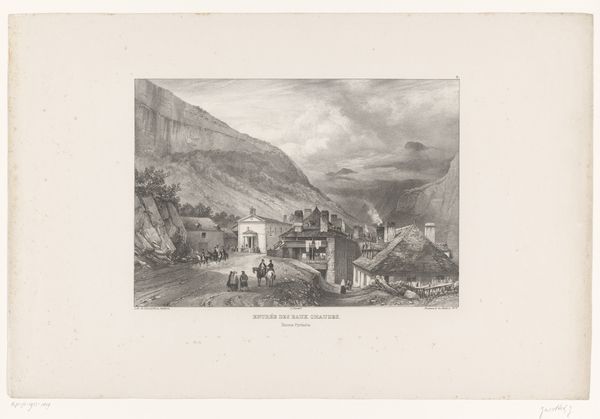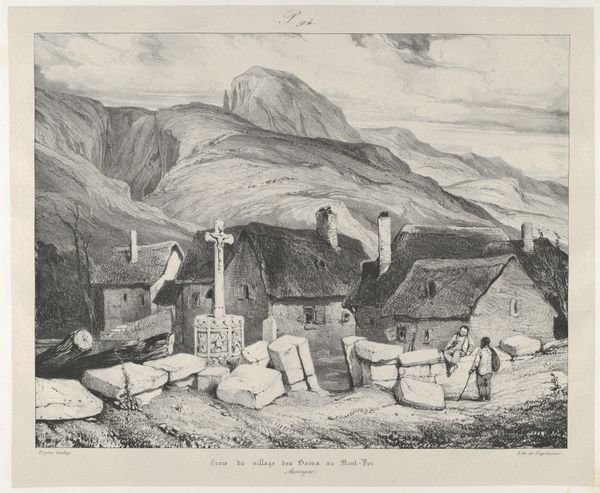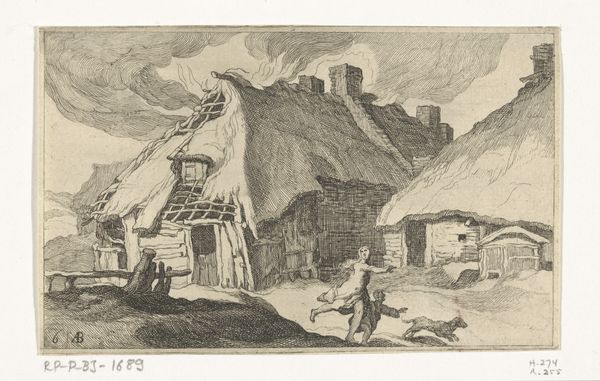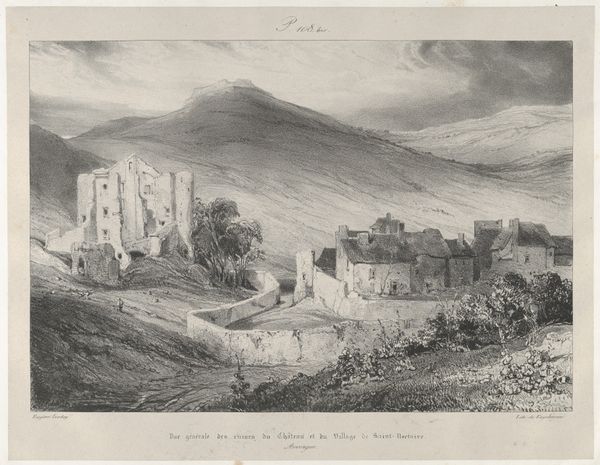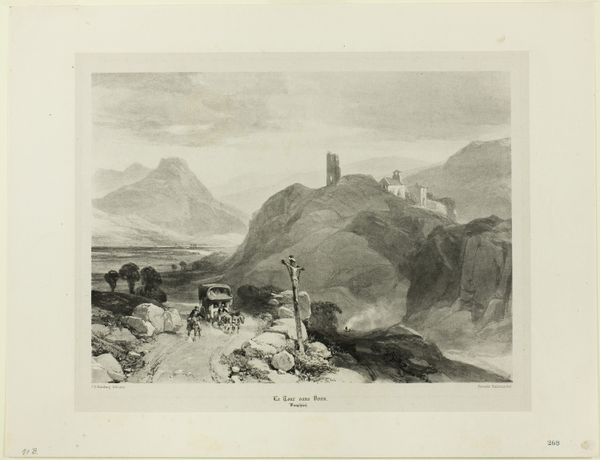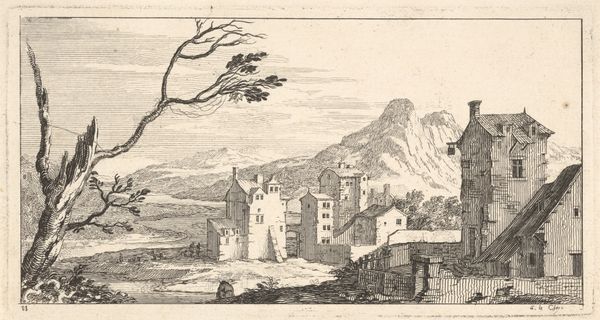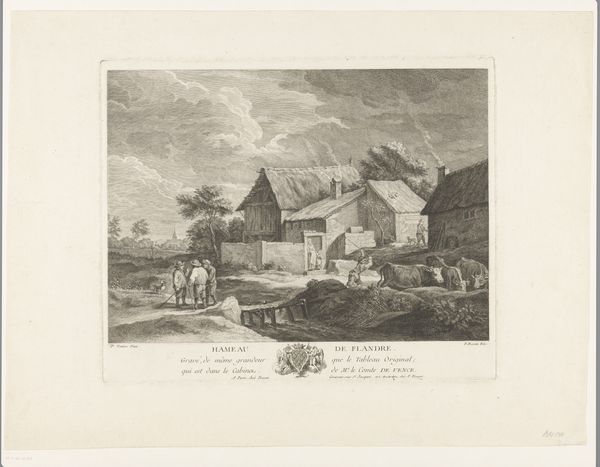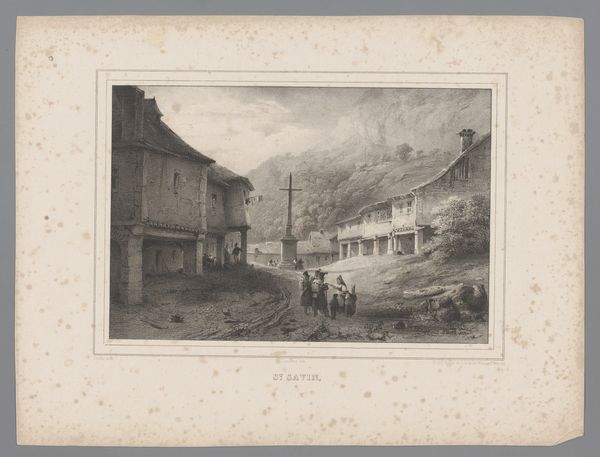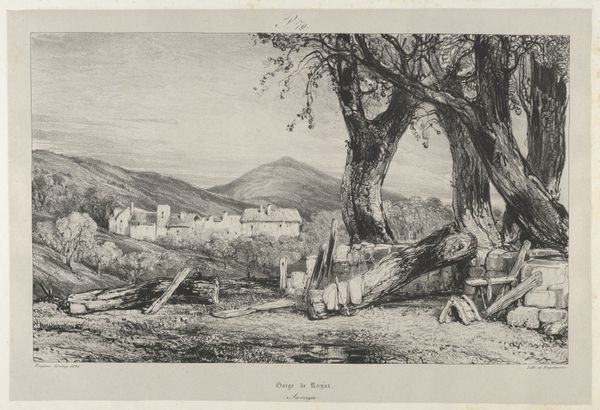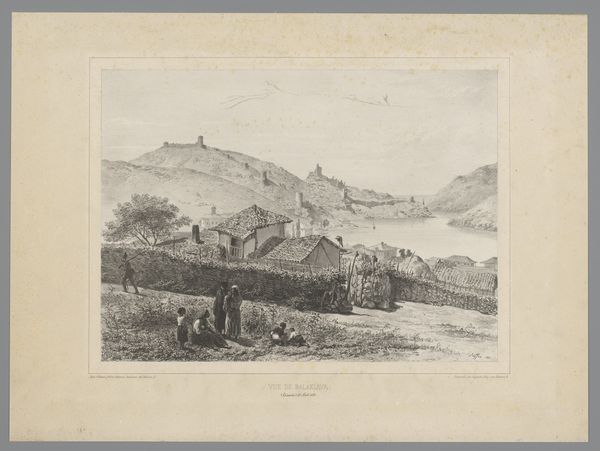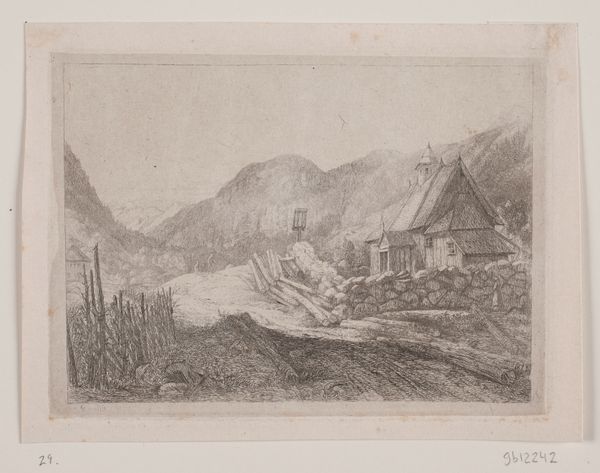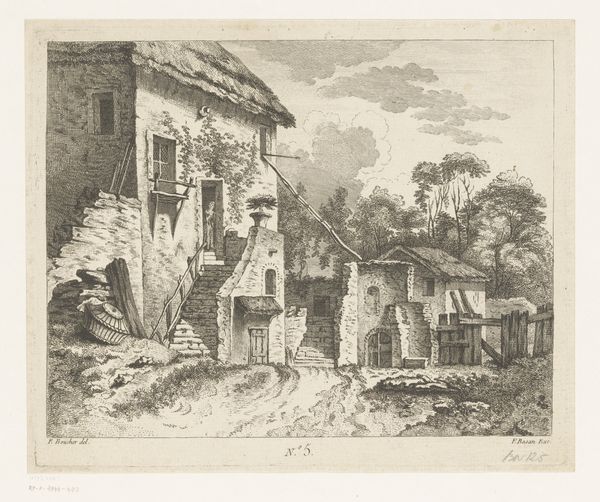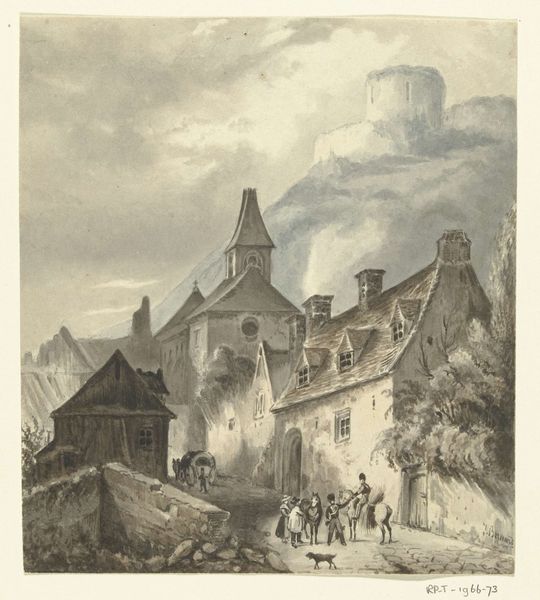
drawing, print
#
tree
#
drawing
# print
#
landscape
#
house
#
romanticism
#
cityscape
#
street
Dimensions: Sheet: 14 in. × 9 7/16 in. (35.5 × 24 cm) Image: 10 13/16 × 13 11/16 in. (27.5 × 34.7 cm)
Copyright: Public Domain
Editor: So, here we have Eugène Isabey's "Entry to the Village of Bains," created in 1831. It looks like a print, maybe a lithograph or etching. There’s something really serene and quiet about it. It’s like stepping back in time. What do you see in this piece? Curator: I'm drawn to how Isabey uses symbols within the landscape. Consider the prominent placement of the cross near the village entrance. How do you interpret that within the broader context of the image? Editor: Well, I guess it represents faith and the central role of the church or religion in village life. Is it supposed to make us think of it as a religious place, too? Curator: Precisely. The cross isn't merely a physical object; it's a loaded symbol deeply embedded in cultural memory. How might this relate to the Romantic period, a time when people were thinking more and more about the past? The looming mountains, too... what do they signify? Editor: They kind of give the village a sense of being protected, but also maybe isolated? Curator: Isolation, perhaps introspection – ideas Romanticism certainly explored. Think of how that verticality presses down on the village… and the mountains. This print serves as a microcosm, reflecting the psychological weight of place and belief during a period of significant change. What impression does the weathered stone and worn path give you? Editor: It feels like life isn't always easy, but they keep going... I hadn't thought about all the symbolism, like, faith versus isolation. Thanks for the pointers! Curator: Absolutely, it's about unearthing those layers, seeing how artists communicate meaning through visual cues that resonate across time.
Comments
No comments
Be the first to comment and join the conversation on the ultimate creative platform.
